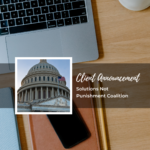As your donors plan for their retirement and future financial security, they may find themselves looking for ways to give back to the causes they care about. (Hopefully your organization finds its way into that review!) But how many donors understand that they can make a charitable donation through their IRA? This powerful giving strategy not only enables your donors to support their favorite nonprofit organizations – like yours – but it also offers them potential tax benefits.
Here’s how you can communicate this message to your donors to foster meaningful impact.
Step 1: Educate
What is an IRA Charitable Rollover?
An IRA charitable rollover, also known as a Qualified Charitable Distribution (QCD), allows individuals aged 70½ or older to donate up to $105,000 per year directly from their IRA to a qualified charity. When you’re 73 or older, this type of donation counts towards your required minimum distribution (RMD) but is not included in your taxable income. It’s a win-win situation: you fulfill your RMD requirement and reduce your taxable income while supporting a cause you care about.
Step 2: Outline Compelling Reasons
Why Consider an IRA Charitable Donation?
- Tax Benefits: Traditional IRA withdrawals are generally taxed as ordinary income. However, a QCD is excluded from taxable income, providing significant tax savings.
- Simplicity: Directing your IRA administrator to make a transfer directly to a qualified charity simplifies the giving process, reducing paperwork and the need for receipts.
- Support Meaningful Causes: Your donation can support a variety of charitable organizations, including educational institutions, health organizations, animal welfare groups, and more.
Step 2: Provide the “How to”
How to Make an IRA Charitable Donation
- Verify Eligibility: Ensure you are 70½ or older and have a traditional IRA. Roth IRAs are also eligible, but not as tax advantaged, but other retirement accounts like 401(k)s may require additional steps.
- Choose a Qualified Charity: Select a nonprofit organization that qualifies for tax-deductible contributions. Public charities, religious organizations, and certain private foundations typically qualify.
- Initiate the Transfer: Contact your IRA custodian to request a direct transfer to the charity of your choice. Provide the necessary details, including the charity’s name, address, and tax identification number.
- Confirm the Donation: After the transfer, verify that the charity received the funds. Keep a record of the transaction for your tax files.
Step 4: Share a Relevant Case Study
Real-Life Impact: A Case Study
Consider Kelly, a 75-year-old retiree passionate about *insert your organization’s cause*. Kelly has a traditional IRA and is required to take an RMD of $20,000 this year. By directing $10,000 of her RMD to *insert your organization* through a QCD, Kelly reduces her taxable income by $10,000 while supporting *insert your organization’s work*. Kelly fulfills her RMD, enjoys tax savings, and makes a lasting impact on a cause she cares deeply about.
Step 5: Encourage Action
Start Making a Difference Today!
Making a charitable donation through your IRA is a smart and impactful way to support the organizations you love. As you plan your financial future, consider how you can leverage your IRA to make a difference. For more information, consult with your financial advisor or IRA custodian, and start making a positive impact today.
Your generous contribution can help organizations like “insert your organization* continue their important work in bringing renown productions to the local community. Together, we can *insert your mission*.
For more details on how to donate through your IRA and support “insert your organization*, visit our website or contact us directly. Thank you for your continued support and commitment to making a difference.
To learn more about how we can help, contact Kelly Grattan or visit https://schultzwilliams.com/planned-giving/
*This post is for informational purposes only and should not be considered financial or legal advice. Please consult with a professional advisor to discuss your specific circumstances.*




